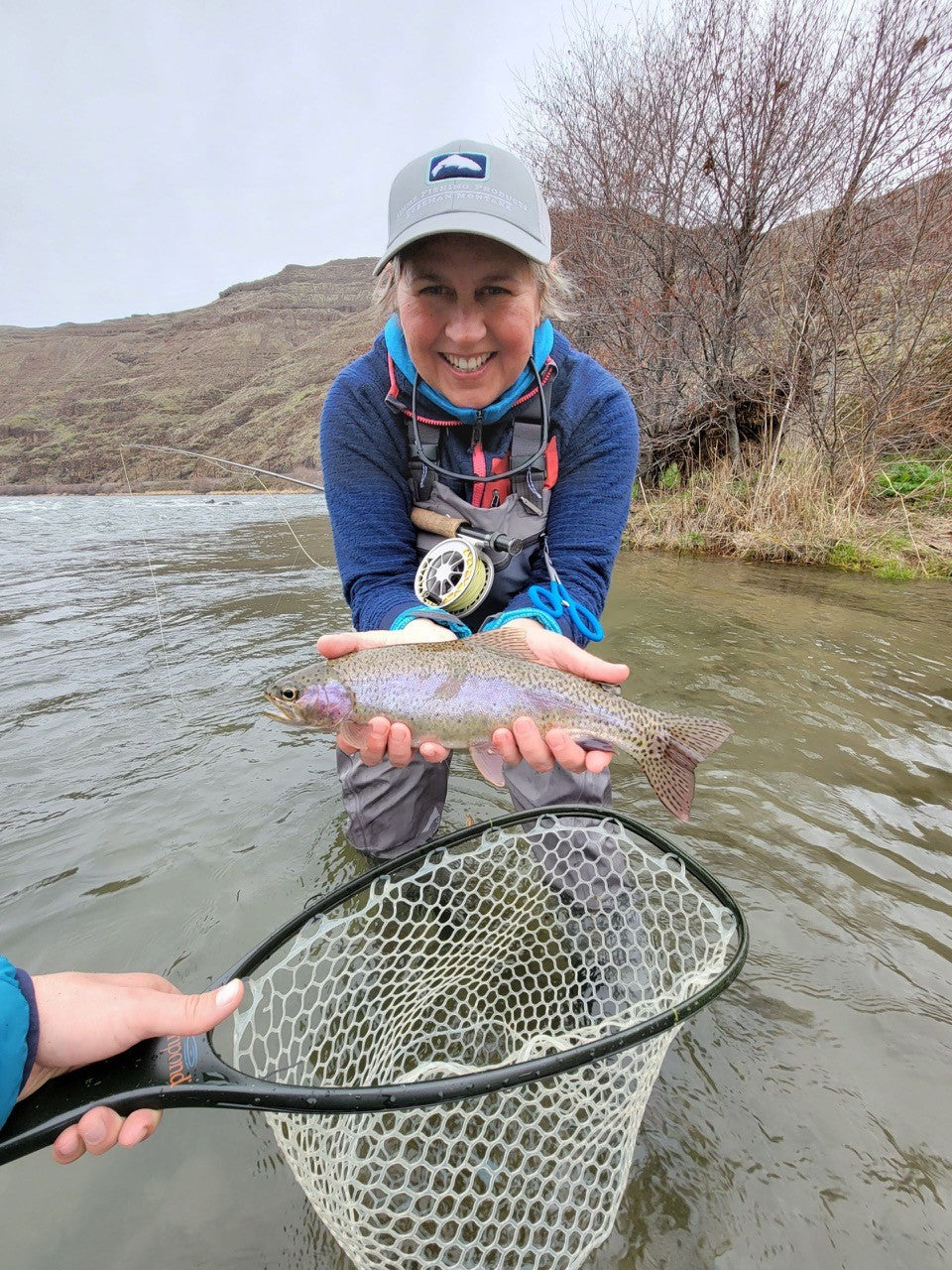Great weekend adventures await!

Shop Hours: 9:00 AM to 5:00 PM Monday through Saturday
Closed Sundays in March
It’s spawning time on the Deschutes River – so there is a real need for anglers to be aware of the areas that trout and steelhead use for spawning and to AVOID fishing on or stepping on the gravelly areas where the trout and steelhead lay their eggs – these are called redds. Not only is it unethical to target trout and steelhead at their most vulnerable time, it is ILLEGAL to do so when it comes to steelhead. The Deschutes River is currently closed to angling for and retention of steelhead. These are ESA (Endangered Species Act) listed fish and are thus protected by law during their spawning time.
How does one know when they are crossing the line into unethical or even illegal territory? It is quite easy to determine when you are near spawing areas – for one, you will be in shallow water. This water will be as deep as waist-deep and as shallow as your ankles. The big determining factor is the substrate – there will be gravel. Trout and steelhead can only spawn in areas of the river where theycan dig their redds in the loose gravel. If you are standing on or fishing over areas where the rocks are the size of M&M candies or even as large as golf balls, you are very likely fishing on a redd.
Not only does fishing on redds disturb the fish and cause them to stop spawning, your feet and your body weight crunching on the gravel will crush the eggs and destroy future generations of trout and salmon. Unlike so many western rivers, the Deschutes is NOT stocked with hatchery trout and we have a large population of wild steelhead using the mainstem of the Deschutes for their spawning due to the fact that the tributaries don’t have enough water in them to allow fish passage this year.
It is up to all anglers to police the redds. By that, I mean if you see something, say something. There are a huge proportion of anglers in the last few years who are new to the sport. They may not realize that targeting fish on redds is unethical and illegal in the case of steelhead. It is okay to talk to people whom you see fishing redds and to let them know that this is not okay.
The weather looks to be windy but warm on Saturday and warm and a lot calmer on Sunday. Both days should be great days for fishing out here.
We have been guiding all week and have some good news to report - the BWO (blue winged olive) mayflies have had strong hatches all week. On warm overcast or rainy days the hatch has kicked off as early as 10:30 AM and has lasted for hours. On sunny days the duration of the hatch is shorter, but you will see the little green mayflies at some point in the afternoon.
In addition to the tiny mayflies, we have been getting trout to come up to skwala stonefly dries. The skwala is just one of the many species of stoneflies that live in the Deschutes – most of you are more familiar with the salmonfly and golden stones which blanket the river in May. The skwalas will be very familiar to you and recognizable as a member of the stonefly family – but instead of salmon or golden in color, the skwalas are a dull gray or gray-olive. We have been fishing a micro-chubby as the dry with a dropper below and the trout are confidently eating the chubby.
We get asked a lot about the March Brown (Rithrogena morissoni) because it is, afterall, March – right? Well, we didn’t name this bug – but we would have called it the April Brown because that is when that very large mayfly makes a splash in the Deschutes with its huge oversized upright speckled wings. We have seen a couple here and there, but we expect to see more and more as we get closer to April.
So, the dry fly fishing will be sporadic this weekend. The dry dropper fishing may be a little bit more productive for you, and the deep nymphing will always produce. Come on by the fly shop and we can show you the patterns that will work the best for the trout.











Thank you for the warning of spawning steelhead and trout this time of year! Generally how long does the spawning process take, and when can someone feel safe again wading in those gravel areas?
Another sign of redds is when you see a section of rocks/pebbles that look to be cleaned or cleared compared to the rest of the river bottom. Pretty easy to spot with some good fishing sunglasses and taking a moment to assess the river from above.